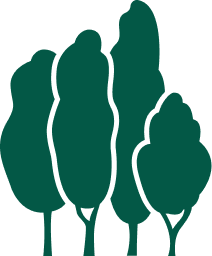
Product details
Cold Hardy, Disease-Tolerant Tree Delivers Sweet FruitWhy Harko Nectarine Trees?One of the highest-scoring varieties in fruit testings, the Harko Nectarine Tree delivers juicy bounties with a sweet flavor that's second to none.This cold-hardy variety from Canada gives you large, showy pink blossoms that give way to sweet nectarines, thriving even through chilly weather and tough conditions. And because the Harko is tolerant of bacterial spot and brown rot, it provides its delicious fruit without the need for harsh chemicals or sprays.Why Fast-Growing-Trees.com is BetterBut the best part? Because we've nurtured and grown your Harko Nectarine in our greenhouse months before shipping, it arrives ready to start producing home-grown fruit that's unmatched.Plus, you won't have to deal with finicky care or fuss to get a bounty of delicious nectarines. In fact, you could get nectarines from our Harkos as soon as the first year or two.But don't wait - the sooner you get your Harko Nectarine, the sooner you can begin enjoying home-grown nectarines. Get your Harko Nectarine today!Planting & Care1. Planting: Plant your nectarine tree in well-drained soil in a location where it will receive full sun (at least 6-8 hours of sunlight a day). Heavy winds and early frosts can damage the blossoms, so be sure to protect your tree by planting on the sunniest side of a building or your home.From there, dig a hole twice as wide as the root ball and just as deep. Amend the soil around the hole with compost to ensure the tree has proper drainage.2. Watering: Keep the soil around the tree moist but not saturated. Watering once a week by leaving a hose at the base of the tree for a few minutes is generally sufficient. 3. Fertilizing: After your tree has been in the ground for six weeks and the danger of frost has passed, apply a well-balanced fertilizer formula, such as 12-12-12.4. Pruning: Prune the first two years in order to maintain an open center shape and encourage fruit production. Prune your tree in late winter or early spring using pruning shears and making your cuts at a 45-degree angle.
Harko Nectarine Tree
$124.95$144.95
3% Cash Back
Best Price

Sold byFastGrowingTrees
FastGrowingTrees.com was built with a single mission in mind - to deliver superior trees and plants that you can count on, directly to your door. We provide you with top-notch plants, the easiest way possible. Because your plants have been meticulously grown and cared for by expert growers, you can rest assured they’ll arrive in excellent condition, ready to thrive.
Holiday Pages
FastGrowing Trees Black Friday
FastGrowing Trees Cyber Monday
FastGrowing Trees Holiday Gifts
FastGrowing Trees Presidents' Day
FastGrowing Trees Memorial Day
FastGrowing Trees 4th of July
FastGrowing Trees Labor Day
Product details
Cold Hardy, Disease-Tolerant Tree Delivers Sweet FruitWhy Harko Nectarine Trees?One of the highest-scoring varieties in fruit testings, the Harko Nectarine Tree delivers juicy bounties with a sweet flavor that's second to none.This cold-hardy variety from Canada gives you large, showy pink blossoms that give way to sweet nectarines, thriving even through chilly weather and tough conditions. And because the Harko is tolerant of bacterial spot and brown rot, it provides its delicious fruit without the need for harsh chemicals or sprays.Why Fast-Growing-Trees.com is BetterBut the best part? Because we've nurtured and grown your Harko Nectarine in our greenhouse months before shipping, it arrives ready to start producing home-grown fruit that's unmatched.Plus, you won't have to deal with finicky care or fuss to get a bounty of delicious nectarines. In fact, you could get nectarines from our Harkos as soon as the first year or two.But don't wait - the sooner you get your Harko Nectarine, the sooner you can begin enjoying home-grown nectarines. Get your Harko Nectarine today!Planting & Care1. Planting: Plant your nectarine tree in well-drained soil in a location where it will receive full sun (at least 6-8 hours of sunlight a day). Heavy winds and early frosts can damage the blossoms, so be sure to protect your tree by planting on the sunniest side of a building or your home.From there, dig a hole twice as wide as the root ball and just as deep. Amend the soil around the hole with compost to ensure the tree has proper drainage.2. Watering: Keep the soil around the tree moist but not saturated. Watering once a week by leaving a hose at the base of the tree for a few minutes is generally sufficient. 3. Fertilizing: After your tree has been in the ground for six weeks and the danger of frost has passed, apply a well-balanced fertilizer formula, such as 12-12-12.4. Pruning: Prune the first two years in order to maintain an open center shape and encourage fruit production. Prune your tree in late winter or early spring using pruning shears and making your cuts at a 45-degree angle.
*To qualify for a Welcome Bonus, you must be a new member and spend at least $25 before taxes on purchases that are eligible for Cash Back within ninety (90) days of becoming a member.
See full terms